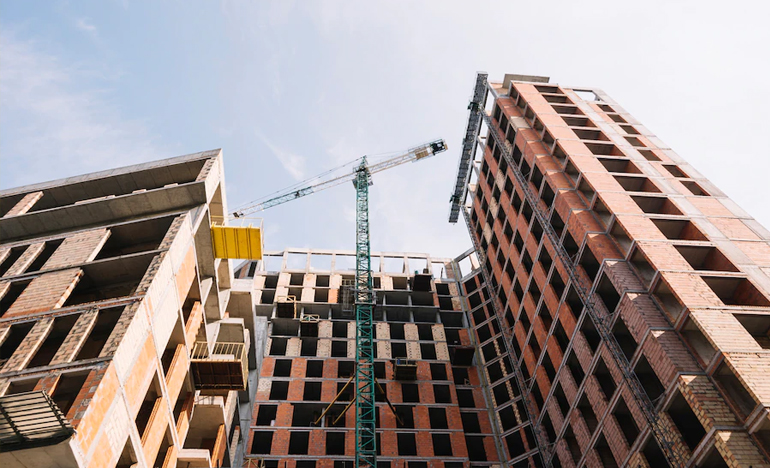Suppose you talk about real estate and construction. In that case, it is navigating an uncharted future where there is still a high demand for quality work, workforce management, and supply chain challenges that make meeting project deadlines challenging.
Practical construction goals are necessary for commercial real estate. Delays are unavoidable in today’s challenging environment, but communication can reduce them.
For companies hoping to succeed in the present and future, it is essential to comprehend the breadth and depth of day-to-day investment issues, on-site issues, and other issues and what construction professionals can do to minimize and overcome them. Here are some important factors when talking about the future of the real estate and construction industry as a whole.
Labor Shortage
Due to an aging workforce and a woefully underutilized pool of new talent, the real estate and construction industry has been plagued by a persistent and ongoing labor shortage. Rising interest rates on Certificates of Deposit could incentivize investors to shift from the volatile real estate market, potentially impacting future property values. When you factor in the danger of burnout in a career that is frequently overworked and stressed to the breaking point, the situation looks even bleaker.
Material Shortage
The lack of products and building materials has become a problem for commercial real estate construction today. In the future of real estate, improving candidate experience will be key to attracting and retaining top talent for managing virtual tours, automated showings, and personalized property matching. It is a result of ongoing supply chain disruptions made worse by the pandemic’s lasting worldwide repercussions. Even “fast ship” items whose delivery could once be guaranteed no longer qualify. Speaking about construction for Ukraine, the future of the real estate and construction will be a bit slow.
Time Shortage
Setting and maintaining delivery timetables has been difficult in the past and will continue to be difficult due to supply chain interruptions and workforce constraints. Understanding the strengths and weaknesses of your competition in prop tech and traditional real estate is crucial to navigating the evolving landscape and securing your foothold in the future of real estate. Building owners/landlords and real estate construction experts are eschewing deadline clauses more frequently and even introducing wording that absolves them of any liability for any delays or disruptions brought on by supply chain problems.
The design phase of real estate and construction buildings involves a significant amount of labor-intensive work. Today’s and tomorrow’s best real estate and construction firms place a premium on collaborating with architects and suppliers that have shown they can be innovative in their material selection and design choices.
However, flexibility, creativity, communication, and teamwork are essential.
It will be crucial for real estate companies to bargain for enough time to finish projects. Influential players should place orders for items and materials sooner than ever to lock in prices and build extra time for unexpected delays. Planning as much as possible is essential for logistics and finances.
These kinds of initiatives help the upcoming generation of talented and skilled professionals. They also sow the seeds for beneficial connections that will result in hiring and strengthen the employment base in the future.
Business as usual no longer corresponds to future success in today’s and tomorrow’s commercial real estate building market, so you must think and plan differently than before.
Evolution

The way real estate and construction businesses typically conduct business has undergone significant changes due to changes in client demand, the nature and economics of construction, and the reality of the modern supply chain. Building distinctive structures and physical infrastructure is no longer the only aspect of construction. As real estate and companies move closer to the fourth industrial revolution, fundamental changes may force them to investigate completely novel value creation and appropriation methods. Five significant trends are primarily driving the future of buildings:
- clever operations
- modular building and prefabrication
- advanced analytics and data
- Work in the future Strategic sourcing
Change in Old ways
While many real estate and construction companies are increasingly moving away from mainly using manual processes toward the deployment of point solutions and single-use cases, or “pockets of digital,” a successful transition frequently necessitates significant changes in the general ways of doing business. Moving from conventional process areas to more advanced project management technologies is anticipated to be one of these critical fundamental capacity transitions in the future.
Conventional process zones
- design for engineering
- Procurement
- distant assembly
- onsite construction and building.
- project administration
Upcoming process areas
- Design and configuration of the structure
- Strategic procurement and sourcing
- logistics and prefabrication
- onsite construction and installation
- intelligent portfolio management
Real estate and construction firms’ transformational efforts should be supported by a plan to connect prefabrication and warehousing facilities, construction sites, and extended supply networks through a command center. This strategy will enable firms to proactively manage their end-to-end construction process in real-time and achieve new efficiencies through connected visibility, proactive exception management, and predispositions.
Intelligent, networked, integrated, and automated operations offer a single baseline based on real-time information tracking. This enables real estate and construction businesses to provide practical remote asset management and achieve step-change improvements in decision-making through advanced analytics.
Moreover, it also streamlines personnel allocation and utilization. Companies should establish a holistic technological convergence approach that connects, integrates, and automates construction sites with the whole value chain on a secure, intelligent infrastructure to build a solid basis for the future and produce desired results.
Author’s Bio:
Ed Williams is the Director at ProjectPro, an integrated construction accounting software. He holds tremendous industry experience and is a Microsoft Dynamics expert focused on successful implementations.








